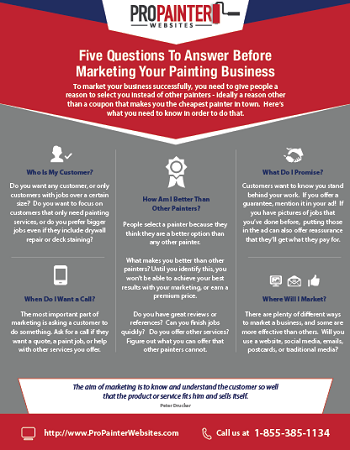Elements To Take Into Consideration For Industrial Exterior Painting By Season: Vital Information You Should Have
Elements To Take Into Consideration For Industrial Exterior Painting By Season: Vital Information You Should Have
Blog Article
Content By-Aguilar Urquhart
When you're preparing a business exterior painting task, seasonal factors can make or break your results. You'll wish to think about how temperature level and moisture influence paint application and drying out times. Selecting the ideal period can ensure your paint sticks appropriately and lasts longer. But which seasons are genuinely the very best for this type of work? Allow's explore the crucial elements that can affect your job's success.
The Effect of Temperature on Paint Application
When you're preparing an industrial outside painting task, the temperature level can significantly impact how well the paint adheres and dries out.
Preferably, you wish to paint when temperatures range between 50 ° F and 85 ° F. If it's as well cool, the paint might not treat correctly, bring about concerns like peeling or fracturing.
On the flip side, if it's also warm, the paint can dry also quickly, protecting against correct bond and resulting in an irregular coating.
You ought to additionally consider the moment of day; morning or late afternoon offers cooler temperatures, which can be much more desirable.
Constantly inspect the producer's referrals for the details paint you're making use of, as they frequently give guidance on the suitable temperature range for ideal outcomes.
Moisture and Its Result on Drying Times
Temperature isn't the only environmental factor that influences your commercial exterior paint job; humidity plays a considerable function too. High humidity degrees can decrease drying out times significantly, impacting the overall top quality of your paint job.
When the air is saturated with moisture, the paint takes longer to heal, which can cause concerns like poor attachment and a greater risk of mold development. If you're repainting on a particularly humid day, be planned for extended delay times between layers.
https://www.digitaljournal.com/pr/4774554 to check regional weather and plan appropriately. Ideally, aim for moisture degrees in between 40% and 70% for optimal drying out.
Keeping visit the following page in mind guarantees your project stays on track and provides an enduring surface.
Best Seasons for Commercial Exterior Painting Projects
What's the best time of year for your commercial outside painting jobs?
Springtime and early fall are usually your best choices. Throughout these seasons, temperatures are moderate, and humidity degrees are commonly reduced, producing excellent problems for paint application and drying out.
Avoid summer's intense heat, which can trigger paint to dry also promptly, bring about bad bond and surface. In a similar way, winter season's chilly temperature levels can impede appropriate drying and treating, running the risk of the durability of your paint work.
Go for days with temperatures in between 50 ° F and 85 ° F for optimum outcomes. Remember to inspect the local weather report for rain, as damp conditions can wreck your task.
Planning around these factors guarantees your paint job runs smoothly and lasts longer.
Conclusion
Finally, planning your industrial outside paint jobs around seasonal considerations can make a substantial distinction in the outcome. By scheduling job during the suitable temperatures and moisture levels, you'll ensure much better adhesion and drying out times. Bear in mind to watch on neighborhood weather prediction and pick the correct time of year-- springtime and very early autumn are your best bets. Taking these steps will aid you accomplish a long lasting and professional surface that lasts.
